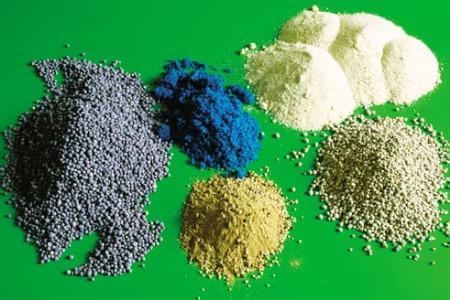Large, medium and trace elements in fertilizers, large elements refer to nitrogen, phosphorus and potassium, medium elements refer to calcium, magnesium and sulfur, and trace elements refer to iron, manganese, zinc, copper, molybdenum, boron and chlorine.
First, distinguish from the content:
1, the content of a large number of elements: a large number of elements generally account for more than 1% of the dry matter mass of the organism.
2, the content of medium elements: medium elements generally account for 0.1% to 1% of the dry weight of organisms.
3, the content of trace elements: trace elements exist in very small amounts in organisms, usually referring to minerals less than 0.01%.
Second, distinguish from the role above:
1. Lots of elements
(1) Nitrogen is an essential nutrient for plant growth, and it is an integral part of every living cell. The effect of nitrogen on plant growth and development is very obvious.
(2) Phosphorus is involved in photosynthesis, respiration, energy storage and transfer, cell division, cell enlargement, and other processes in plants. Phosphorus promotes ripening and is important for crop quality and harvest.
(3) One of the important physiological effects of potassium is to enhance the regulatory role of cells to environmental conditions. Potassium can enhance the tolerance of plants to various adverse conditions, and the selection of water-soluble fertilizer with high potassium and a large number of elements can improve the drought, low temperature, salt content and lodging of crops.
2. Medium elements
Calcium, magnesium and sulfur have very important and irreplaceable physiological functions in plants. Calcium can stabilize the structure of biofilm and maintain the integrity of cells. Calcium is an important element in the cell wall, and the majority of calcium in plants is found in the cell wall.
Calcium promotes cell elongation, which accelerates root growth. Calcium can also bind to calmodulin, participate in the second messenger transmission, and activate many key enzymes in plants. A large amount of calcium accumulates in the vacuole, which makes an important contribution to the balance of cation and anion in the vacuole. Magnesium is a component of chlorophyll and plays an important role in plant photosynthesis.
3. Trace elements
Zinc and boron are very important for crop growth, and zinc and boron are very important for crop flowering and young fruit growth. The most lacking nutrient element often determines the final output of the entire orchard, and the lack of any element of zinc and boron will cause shortfalls in actual production. Flowering, fruit preservation, fruit cracking any of the links of the problem, will have an impact on the crop.

.png)
.jpg)